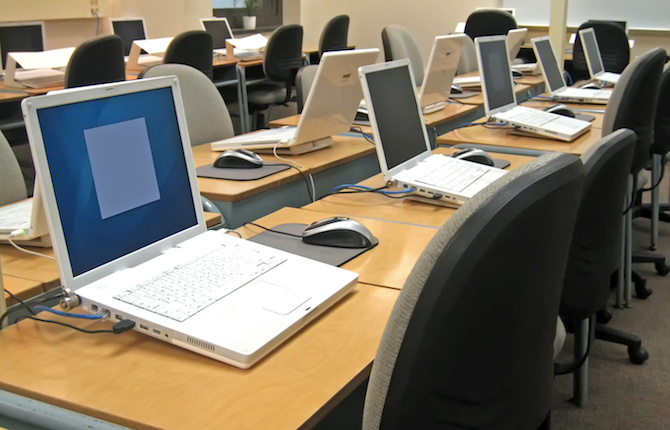Staying ahead with school technology

In a competitive education industry, parents increasingly look to schools to provide value-added services for both students and parents – and it’s no surprise that these expectations extend to the quality of technology supplied to students.
For schools who both acquire and maintain IT equipment for staff and students, staying ahead of the technology game can present a considerable challenge.
This is particularly the case because of the rapid rate of obsolescence. To side-step the cost and inconvenience of this, many schools have adopted the ‘Bring Your Own Device’ model.
At face-value, the BYOD approach can make sense for schools, but there are a number of factors to consider if adopting this solution. With IT infrastructure changing constantly, there’s a risk of variable learning outcomes for students using inconsistent technology. Furthermore, there’s pressure on parents to provide technology solutions for their child; and they may not welcome the suggestion that they acquire a particular laptop.
Technology funding and leasing
A smarter solution may be for schools to consider technology funding and leasing options. A number of lenders currently provide rental or operating lease solutions that fulfil this purpose.
The technology funding approach involves a financier purchasing the IT equipment requested by the school. The school then rents the equipment from the financier for an agreed period of time, which is typically linked to the useful life of the technology and coincides with the changing learning needs of students. For example, students in years seven to nine often use iPads, whereas in years ten to 12, the use of laptops is more common. To cover the cost of providing this equipment, parents would pay the school an agreed and appropriate levy.
At the end of the agreed term, there are a number of options available to the school. They can return the equipment to the lender; make an offer to purchase the equipment from the lender at fair market value, or pay a previously agreed amount to continue to rent the equipment on a monthly basis.
Alternatively, a combination of the above may be agreed. This system of addressing technological equipment needs could benefit the school in several ways, depending on their circumstances. Firstly, the school does not take on the equipment risk, with the inherent danger of technological obsolescence. Equipment can be returned at end of the agreed term and replaced with new equipment (providing they meet any lender conditions, which may apply). Another benefit is flexibility, with schools having the flexibility of upgrading or increasing their equipment during the rental term. Additionally, IT technology does not need to be purchased as a capital outlay upfront, which constitutes a considerable cash-flow reprieve. The agreement also has flexible end-of-term options and can carry tax benefits.
There is also the ability to structure rental payments to suit the cash-flow situation unique to each school. In certain situations, total payments can total less than the capital cost of the equipment.
What to look for
When considering any type of funding to suit your requirements, it’s important to investigate if the financier has an established track record in the industry, and whether the financier is flexible regarding end of term dates and condition of equipment at return.
Choosing a financier that offers you the flexibility of different suppliers means you’re not locked in to a manufacturer or supplier, and can meet the changing needs of your school while keeping up to date with current technology.
You should also be aware of any hidden fees and charges or extra payments that aren’t obvious in the initial quote. Ask potential financiers to clearly explain to you the all-up cost over the contracted term.







